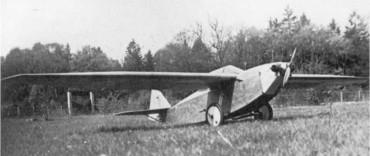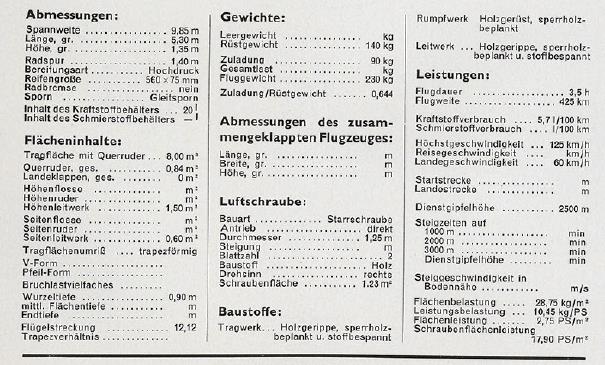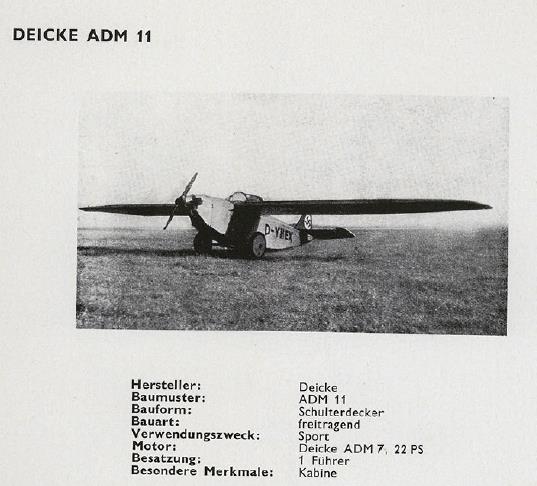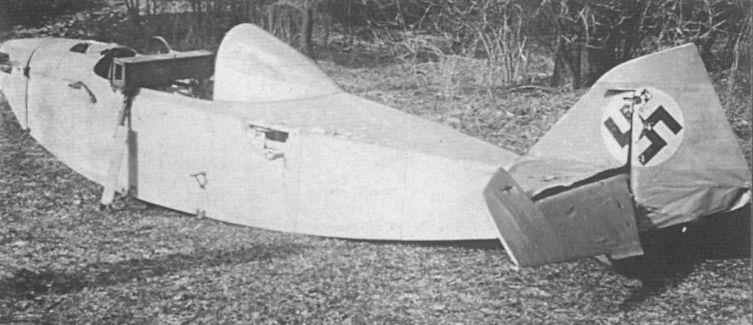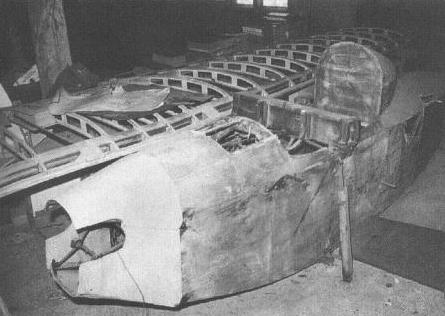| Type | Single seat sportplane (Volksflugzeug) |
| Engine | 1 Deicke ADM.7 |
| Dimensions | Length 5,30 m , height 1,35 m , span 9,85 m , wing area 8,00 m2 , |
| Weights | Empty 140 kg, loaded , max. take off weight 230 kg |
| Performance | Max.. speed 125 km/h , cruising speed 105 km/h , range 425 km, endurance , service ceiling 2500 m , climb |
In the early 1930s, the idea of creating a "people's plane" (Volksflugzeug) - cheap and easy to fly - became very popular in Germany. Not passed by this idea and engineer Arthur Deicke (Arthur Deicke) from Munich.
In 1933, he completed the ADM.11 single-seat light aircraft project with an engine of his own design. The aircraft made its first flight at the beginning of 1934 with a 12-horsepower engine, but the flight characteristics of the aircraft did not impress the designer and he developed a new 22-horsepower ADM.7 engine.
In 1936, an aircraft (registration D-YHEX) piloted by Tony Fechbacher took part in the Olympia-Großflugtag competition and won first place in its category. The plane made several more demonstration flights, but with the beginning of the Second World War it was hidden in a small hangar in the city of Prien, where they forgot about it.
Only in 1984, American amateur historian Bill Murray found the surviving fuselage of the aircraft. And in the early 2000s, he, together with the Italian Franco Aktis, restored the aircraft, installing a Salmson engine on its replica.
In 1933, he completed the ADM.11 single-seat light aircraft project with an engine of his own design. The aircraft made its first flight at the beginning of 1934 with a 12-horsepower engine, but the flight characteristics of the aircraft did not impress the designer and he developed a new 22-horsepower ADM.7 engine.
In 1936, an aircraft (registration D-YHEX) piloted by Tony Fechbacher took part in the Olympia-Großflugtag competition and won first place in its category. The plane made several more demonstration flights, but with the beginning of the Second World War it was hidden in a small hangar in the city of Prien, where they forgot about it.
Only in 1984, American amateur historian Bill Murray found the surviving fuselage of the aircraft. And in the early 2000s, he, together with the Italian Franco Aktis, restored the aircraft, installing a Salmson engine on its replica.
| Type | Werk.Nr | Registration | History |
| D-YHEX | A |


